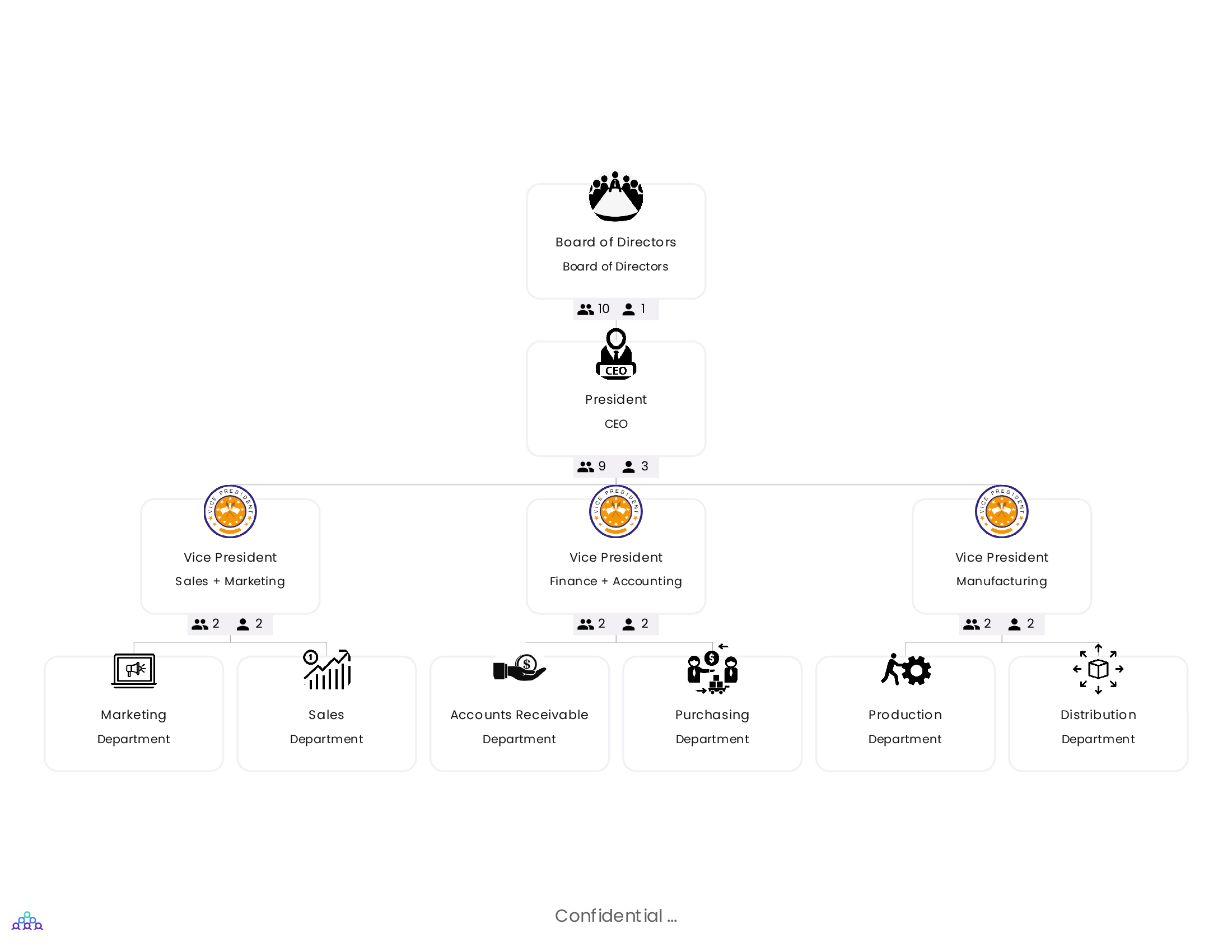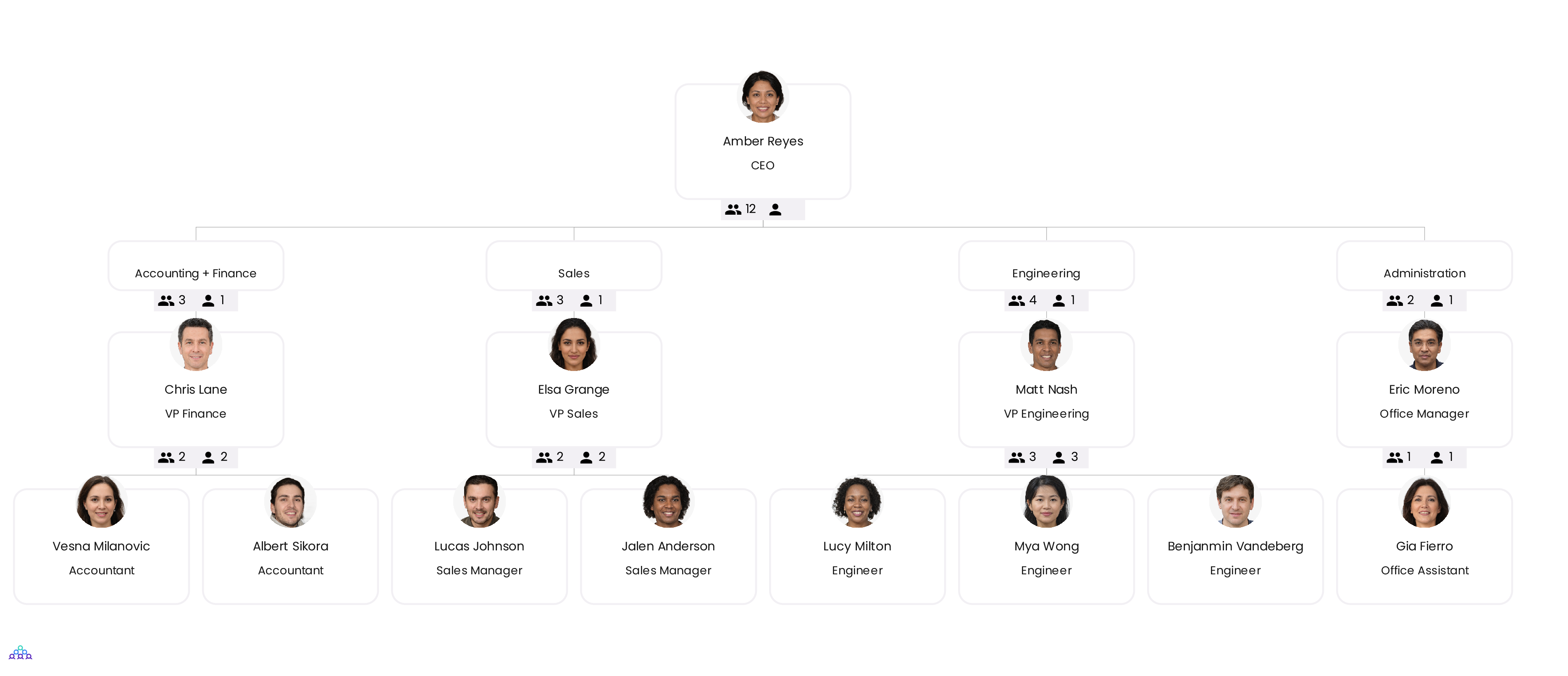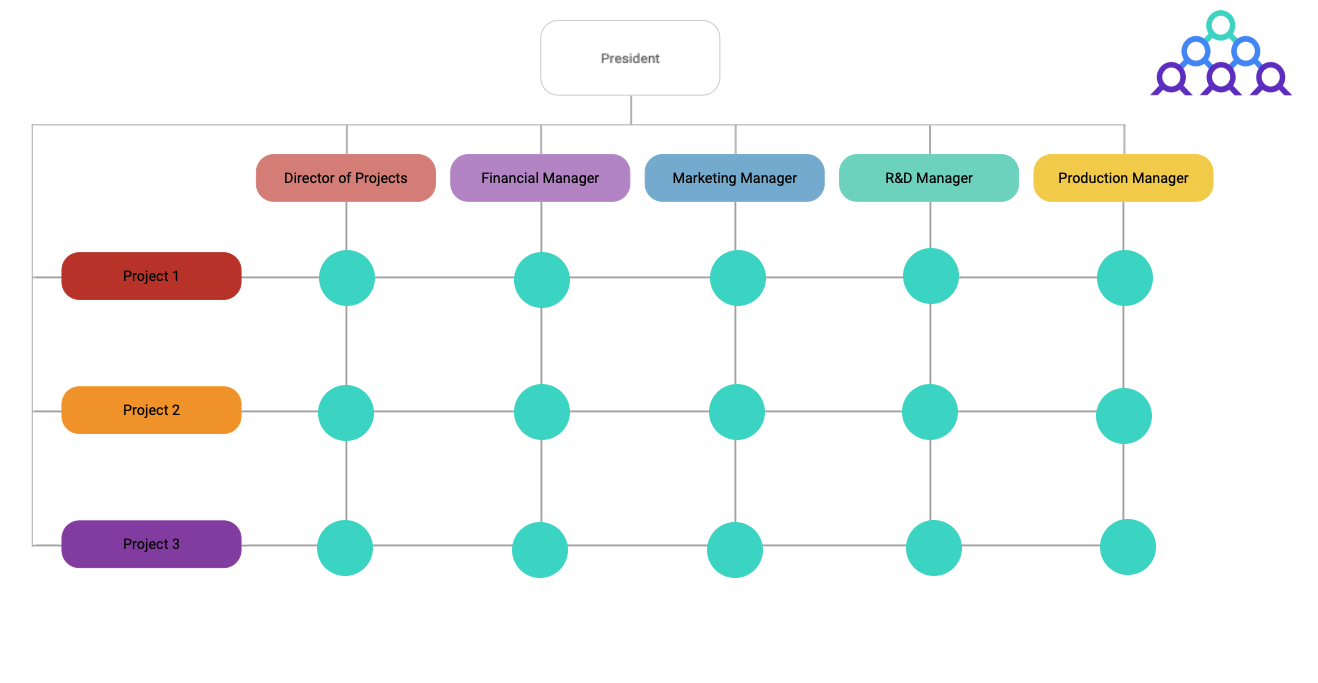AN ORGANIMI GUIDE
How the Cloud Is Transforming the Traditional Organizational Chart Into a Strategic Business Tool.
Everything you need to know about organizational charts.
Understanding org
charts
Mapping your
organization
Planning for
change
Almost everyone who has worked for a large or medium-sized company is familiar with the ubiquitous organizational chart. First introduced in the mid-1800s, org charts evolved steadily throughout the last century.
Today, companies rely on cloud-based org charts for everything from long-term planning and new hire onboarding to driving internal communications and collaboration.
What is an organizational chart?
An org chart is a diagram that visually represents the structure of an organization by highlighting the roles of individuals and the relationship those individuals have with others within the organization.
Organizational charts are also known as ‘organograms.’
Perhaps the most well-known precursor of today’s org chart was developed by the Computing-Tabulating-Recording Company (CTR Co.) in 1917. CTR Co. employed a pyramid structured org chart that clearly laid out its functional divisions, departments, and geographic subcategories. In 1924, CTR Co. was renamed International Business Machines (IBM).
Learn more about the evolution of organizational charts here.
Hierarchical Versus Matrix-based Organizational Structures
While there are many different organizational structures, the two most well-known and widely used organizational charts are hierarchical and matrix-based.
Hierarchical is the more common of the two. It is represented by a pyramid-shaped org chart with senior leadership (e.g., the CEO) at the top, working its way down through each reporting relationship to the individual contributor level at the bottom.
Pros. The hierarchical structure clearly defines levels of authority and reporting relationships. It establishes clear paths for accountability and communication that can help promote team identity within departments.
Cons. A rigid hierarchical structure can create silos and discourage collaboration across functions and departments. It can lead to territorial behavior and create unneeded bureaucracy, especially in larger organizations.
A matrix organization occurs when teams or individual employees have multiple managers. The matrix structure is commonly used in organizations where employees are divided into teams and operate using cross-functional groups rather than a linear reporting structure. The matrix org chart resembles a grid, reflecting the cross-functional nature of the organization.
Pros. A matrix structure enables the sharing of skilled resources between different departments and teams. It simplifies cross-departmental communications and knowledge-sharing and creates a more dynamic working environment.
Cons. The multiple reporting relationships inherent to the matrix structure can create priority conflicts and uncertainty about responsibilities. The dynamic nature of matrix organizations can lead to discomfort for some employees and negatively impact performance coaching and career development.
ORG CHART GUIDE
QUICK LINKS
Let’s get you started!
Organimi is a powerful, cloud-based org chart management platform that helps you connect and collaborate with your colleagues wherever they work!



